One of the first things anyone with an enquiring mind will quickly discover when trying to find out what really happened in the Kelly Outbreak, is that every important event in the story has been deeply infiltrated with myths, misunderstandings and misinformation. They will also discover that even though most of the misinformation included in the story has been well and truly exposed and debunked in recent years, so-called ‘Kelly sympathisers’ continue to enthusiastically and uncritically believe promote and defend almost all of it.
This observation certainly applies to Ned Kellys trial, the 143rd anniversary of which is today, October 28th.
It’s an event that’s been confused and misrepresented by all kinds of false claims and conspiracy theories, and I daresay if they mention it this trial anniversary weekend on the Kelly admirers FB pages, the usual suspects will once again be promoting the standard litany of myths and lies about it, just as they do about every other aspect of the story. They all pretend that they haven’t seen or heard the scholarship that has overtaken them, but I am here to keep reminding them, and everyone else what the true story of the trial is.
There are at least four favourite myths that Kelly defenders keep repeating about the trial: one simple one is that Kellys trial only lasted two days because the Judge wanted to finish it quickly so he wouldn’t miss the Melbourne Cup. In fact, in those days it wasn’t unheard of for a murder trial to take only a few hours, and some were less than one, so two days was longer than most.
A second favourite myth related to the first one, is really a collection of myths about the character and the standing of the Judge, Sir Redmond Barry a man Kelly sympathisers routinely disparage and mock out of complete and utter ignorance of how great a man he truly was. One often repeated myth about him is that he was biased against the Kellys from very early on, as evidenced by a claim he said that if Ned Kelly had been at Mrs Kellys trial for attacking Fitzpatrick, Barry would have put Kelly away for 15 years. In fact, nobody has ever been able to prove Barry ever said that, but in any case, even if he did it would have been entirely appropriate, as the fugitive Ned Kelly was a named suspect in the crime, and given the conviction of his mother and three others, he would likely have also been convicted. As for Barry, Kelly sympathisers won’t bother to inform themselves about him as facts only get in the way of the myths and prejudices they don’t want to give up, but here’s a LINK to his biography for anyone who would like to be enlightened: Biography of Sir Redmond Barry
Another much more important and pervasive myth, yet another whose aim is also character assassination, is that Cst Thomas McIntyre committed perjury at the trial, giving a false version of how Cst Thomas Lonigan was killed that was fabricated in such a way as to make it impossible for Kellys team to plead self-defence. This claim was made and promoted by Ian Jones, and is wrong. The truth is that every single written and recorded statement made by McIntyre said the same thing about Lonigan’s killing – that it happened within seconds of the order to bail up, well before Lonigan would have had time to draw his revolver let alone fire it, or get to hide behind a ‘battery of logs’ as Kelly claimed. What Jones did in this unforgiveable libel of McIntyre’s integrity and character, was to find and promote over all of McIntyre’s own testimony, an account written by Sadleir when Sadleir was nearly 80, in which he recorded what he thought he could remember of what McIntyre had told him decades earlier about Lonigans death. It was in fact very similar to Kellys version, namely that Lonigan got behind a ‘battery’ of logs and when he lifted his head up above them and aimed his revolver at Kelly, in self-defence Kelly shot first and killed him. We now know that the forensic evidence confirms that version to be a lie, but Jones persuaded himself and just about everyone else in the Kelly world that in a trial, a 30-year-old second-hand recollection would have had greater evidentiary weight than several contemporary signed statements of McIntyres. To the very end of his life Jones cultivated the libellous false belief that Kellys conviction was based on McIntyre committing perjury. He didnt.
The greatest trial myth of all is the claim that it was a mistrial and if it had been conducted properly, and Kelly had been able to claim the murder was an act of self-defence then he would have been acquitted. Most Kelly sympathisers wouldn’t have read John Phillips 1987 book ‘The Trial of Ned Kelly’ but many might be familiar with one sentence from it, the sentence picked out and used by Ian Jones in his promotion of the claim that the trial was a mistrial:
“Accordingly, the conclusion is inescapable that Edward Kelly was not afforded a trial according to Law”
Phillips reached that conclusion because there had been vague rumours that the police were not intending to arrest Ned Kelly but to shoot him on sight. In that situation, Kelly would have been entitled to defend himself because the police would have been acting illegally. In fact, this is exactly what Kelly claimed in the Jerilderie letter, that he shot Lonigan because Lonigan was about to shoot him. According to the myth, that’s also why McIntyre was supposed to have committed perjury, and why the Jerilderie letter was not admitted into the evidence: to deny Kelly the self-defence argument. Phillips points out that in his summing up, Berry made no mention of this possibility, writing (p94): “Sir Redmond should have told the jury that it was for them to decide whether the police were acting as ministers of justice or summary executioners and then reviewed for the jurors the evidence relevant to the issue. Instead the matter was put to the jury in terms that were conclusive in favour of the Prosecution”
There are several important problems with these criticisms of Barry: firstly, Kelly could have made an unsworn statement but chose NOT to. Secondly, Kelly was NOT denied the opportunity to claim self-defence: his team decided NOT to make that defence – instead they attempted to discredit McIntyre. As for the Jerilderie letter – it wasnt admitted because Kellys OWN TEAM refused to allow it. And more importantly, the opinion of Phillips that Ian Jones promoted is not a view thats universally shared among legal minds : Jeremy Stoljar, barrister and QC, author of ‘The Australian Book of Great trials’ believes Phillips analysis is wrong and that Barry was NOT under any obligation to introduce into the trial defences and arguments that Kellys own defence hadn’t introduced themselves. As another legal expert said at the ‘Ned and the Law’ Seminar at Greta in February 2020 “If the self-defence ball is never thrown onto the playing field how can the Umpire make a ruling on it?” (Alice Richardson : A Brush with the Law )
QC and human rights advocate Julian Burnsides view is that Ned Kelly didn’t get a fair trial because his own Counsel failed him : Henry Bindon was very inexperienced, he didn’t have time to properly prepare himself for the trial and among other errors made during the Trial he didn’t raise the issue of self-defence. But whose fault was it that Kelly didn’t get the barrister they wanted, the very experienced and well regarded Hickman Molesworth? ANSWER: The Kellys. Molesworth’s fee was 50 guineas but it would seem in his hour of dire need, Kellys friends and sympathisers weren’t willing to back their support with cash. But would Molesworth made the difference? Burnside concluded that “On one view, a fair trial would still have resulted in a conviction.”
This qualification, that even if the trial had been fair the Outcome may well have been the same is shared by EVERY legal commentator on Kellys trial : even Phillips, in the very next sentence after the one quoted by Jones wrote this “Whether the result would have been any different had the Jury had been correctly directed is, of course, entirely another matter”. Its yet another example of the way Ian Jones misquoted experts to mislead.
Elsewhere, Phillips later wrote “It is possible that were the trial to be reviewed by a modern Court of Appeal, it would, because of the strength of the prosecution case, apply the Proviso in S.568(i) of the Crimes Act on the basis that it considered that no substantial miscarriage of justice had occurred.”
In fact proof has recently come to light that makes it almost certain that no miscarriage of justice occurred, because the mystery of how Lonigan came to have multiple wounds on his body has been solved, and it proves Kellys self defence argument would have been based on the lie that Lonigan was aiming to shoot Kelly from behind a ‘battery of logs’. Samuel Reynolds autopsy findings proved that all four wounds on Lonigans body were inflicted at the same moment, by a single shot of multiple projectiles, one of which entered his left thigh, a part of his body that would have been protected behind the ‘battery of logs’ if Kellys claim was true. The thigh wound proves Kelly lied and McIntyre told the truth about what happened : Lonigan was out in the open when shot and didnt have enough time to even draw his weapon let alone get behind logs and aim it.
At a properly conducted trial Samuel Reynolds evidence would have supported McIntyres and undermined Kellys. and disproved the self-defence plea. Kelly would have been found guilty no matter who represented him.
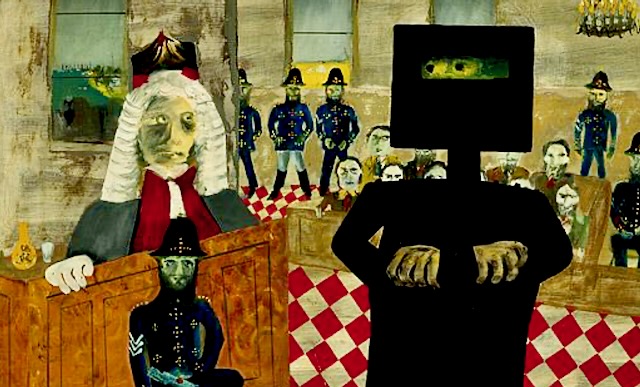
Hi David, the myth that you call the most pervasive is also the most destructive: that McIntyre committed perjury. Jones constructed this claim in his 1967 Wangaratta Seminar talk, printed in Man & Myth 1968. He says p. 137 that McIntyre’s sworn testimony at the trial might have been sharply contradicted by Bindon. This claim is based on Sadleir’s 1913 false recollection, of McIntyre’s first statement.
Jones claims that Kelly adhered to his story that Lonigan got behind logs and had raised his pistol when Kelly shot him. As we know, Kelly’s story changed multiple times in his telling to various persons. Jones claims that the Sadleir recollection shows McIntyre changing his story.
On p. 142 Jones goes for the kill shot and accuses McIntyre of perjury based on Sadleir’s text. Professor Waller, responding,did not know of Sadleir’s text and if he had, he had no context to understand the impact of Jones’ bungling; but this is where the perjury myth originated. In fact, McIntyre’s first statement was in the prosecution file that Jones had read. Whether it was massive incompetence or bad faith, Jones had seen McIntyre’s actual first statement and could see with his own eyes that Sadleir must have been wrong. But Jones was having none of that. Not one to let the facts get in the way of a good story, he elaborated in Short Life that the punctuation in Sadleir’s book proved that what Sadleir wrote was a verbatim quote rather than simple punctuation to set off that part of his text from his own memoir. As we know, McIntyre’s statements were quite consistent over time, whereas Kelly’s were quite inconsistent and as we know from forensic analysis, false. Jones’s amateur bungling constructed the perjury myth, and his artificial argument about self defence falls apart with its exposure. In my next comment I will look with horror at how he vilely sullied Sadleir’s reputation as well.
Here is part 2 of my post about what Jones did to slag off the police testimony in Kelly’s committal. In his Short Life 2008: 362 he wrote, “Apart from Ned [who Jones takes at his word at nearly every opportunity] there was another man who knew that McIntyre had committed perjury.”
[Notice here the arrogance with which Jones asserts as fact that McIntyre committed perjury, cementing it into the Kelly narrative to be accepted by thousands of others and cited as fact by numerous writers based solely on his guru reputation since he first asserted in his SL 1995 first edition.]
Jones continues: “Superintendent Sadleir, seated in the body of the court, must have remembered what McIntyre had told him three days after Stringybark a the held a transcript of that statement.”
[Notice how Jones smears Sadleir as knowingly complicit in perjury. This, apart from being disgusting as well as factually wrong, is part of a broader narrative of police harassment and persecution of the Kellys that echoes through McQuilton amongst others, despite the Royal Commission explicitly examining and rejecting all such allegations. It probably stems from Kenneally’s 1929 Inner History, the book that Jones praises as starting his adventures in Kelly land.]
Jones’s nauseatingly sarcastic smearing of Sadleir continues: “Sadleir, a thoroughly decent, ‘austere and dignified’ man of ancient Irish aristocracy, remained silent. … Decent men like Sadleir knew that the British social-legal system which sought to indict Ned was deeply flawed ….”
What a wanker. “Sitting on a pew- like bench, John Sadleir listened to McIntyre’s evidence and kept his peace. Perhaps as balm to his conscience he published the text of McIntyre’s statement thirty-three years later in his Recollections”.
[Remember, this is Sadlier’s demonstrably faulty recollection that Jones is using to foully smear both McIntyre and Sadleir with being knowingly complicit in perjury because they were ‘out to get Ned’.]
Jones craps on in the same arrogant, sarcastic (and factually wrong) tone for half the next page 363). His bodgy narrative, launched on 1967, has rendered much of the discussion about Kelly’s trial then and since into nothing more than poorly researched vacuous nonsense.
In Julian Burnside’s article http://www.julianburnside.com.au/law/r-v-edward-ned-kelly/ he makes several claims about Kelly’s trial: “Kelly was inadequately represented; the only eye-witness was not adequately challenged; a viable case of self-defence was not properly developed.” He concludes, “Kelly did not get a fair trial.”
The first question is when this article was written. It is from Victorian Bar News, Winter 2000, so 23 years ago. Scholarship has moved on, but our learned friend has not updated his web page accordingly. Kelly was not at all inadequately represented. His instructing solicitor was Gaunson who knew Kelly’s case backwards from the Beechworth committal hearing. The common tale that Bindon was an inexperienced barrister is irrelevant; he was instructed as to how to put the case by Gaunson. The witness (McIntyre) was adequately challenged on all material points. There was never any viable case of self defence and in any case the defence never attempted to run one, for reasons below. This old furphy stems from Ian Jones’ failure to recognise that McIntyre’s first statement was consistent with all his other statements and was in the prosecution file for all including Jones to see, because of his erroneous claim that McIntyre’s first statement was the one in Sadleir’s Recollections. See the discussion of this nonsense in the posts above.
What happened was that McIntyre refused to swear to the correctness of his memory about cetrtain points at Beechworth because his did not keep a copy of his first statement and it had gone astray in the police files. It was found after the Beechworth committal upon McIntyre’s request for a thorough search. He was provided with a copy and a copy was placed in the prosecution file. He was then able to swear to the accuracy of events. This is all recounted in detail in McIntyre’s memoir. Once that statement was reloacted there was no inconsistency in his evidence, and the chance of any self defence argument collapsed. As a result of defending Kelly at Beechworth Gaunson knew that, which is why he did not instruct Bindon to run it.
Burnside claimed that “Over the next 48 hours he made five statements about what had happened. They differed in significant details. In the first of them (a short note scratched out as he hid in a wombat hole) he said that Scanlon had reached for his gun, and had been shot. In later accounts, he had Lonigan reaching for his gun and being shot.”
Review of the statements shows that they are all consistent with one another but relate different parts of the same story. For example, “he said that Scanlon had reached for his gun, and had been shot.” Yes, this is exactly what happened when Scanlon was shot. There is a section in McIntyre’s memoir about it. Burnside then says as an apparent contradiction that “In later accounts, he had Lonigan reaching for his gun and being shot.” Yes, that is exactly what happened; Lonigan reached for but never managed to draw his revolver from its button down holster (and McIntyre never said that he did). There is no contradiction whatsoever between McIntyre’s first scribbled note and his later statements about Lonigan; they refer to different points in time.
Only if one follows Jones’ nonsense insistence that Sadleir’s 1913 text was a verbatim copy of McIntyre’s first statement, which is demonstrated as nonsense above, could Burnside claim that there was any inconsistency in McIntyre’s statements.
Burnside next claims that “Kelly had a breech-loading single-shot rifle. He only had the chance to fire one shot. That shot, in my view, passed through the left forearm and into the right eye: Lonigan had his arm in a defensive position when he was shot. The Kellys had no revolver. The thigh wound must have been caused by Lonigan’s own revolver.”
We now now that Kelly fired a single shot comprised of a split round of some kind, probably a composition bullet, that split and hit Lonigan in four places, simultaneously forensically proving that he never got behind any logs but was shot upright. It is nonsense to claim that the Kellys had no revolver; I don’t know where he got that one, but they were armed to the teeth, Kelly drawing his own revolver as he ran forward after killing Lonigan.
Burnside accepted Jones’ bizarre body straps theory for which there never was any evidence and is countermanded by the short notice of the Stringybark expedition. They barely had time to borrow a shotgun from the Mansfield vicar, let alone get special body straps made. That has been discussed and demolished several times on this blog by several people.
Burnside indulges in a popular anti-police smear that “By all accounts [Sergeant Kennedy] was a decent man in a police force not noted for the quality of its men.” What the AF? The four police in that SBC party were all outstanding men of good character held high in their communities. Anyone else in the police force is irrelevant to that event.
Burnside then says, “The evidence of McIntyre was enough to prove that Kelly shot Lonigan, but only Kelly’s statements in the Jerilderie Letter would have proved that he had shot Scanlon and Kennedy.” This too is nonsense. If Kelly had got off on the charge of murdering Lonigan (against overwhelming evidence), he would then have been charged and tried for thh murder of Scanlon to which McIntyre was also an eye witness. It was only the murder of Kennedy that McIntyre couldn’t have testified to as it happened out of his sight.
Last, Burnside says “I suspect that Kelly was charged with the killing of Lonigan alone in order to avoid the need to rely on the Jerilderie Letter.” This too is wrong: the police files show that they were ready to proceed with trying Kelly for the murder of Scanlon. And with McIntyre as an eye witness it would have succeeded. And if that hadn’t succeeded there was a huge number of other charges that he could have been tried for, not the least of which was the attempted murder of Constable Fitzpatrick; to which add stock theft, kidnapping, innumerable assults with a weapon, armed robbery….
His conclusion was that “Kelly’s counsel failed him, and as a direct result Kelly did not get a fair trial.” As we have seen, this is not correct. I have written a roughly 11,000 word article on McIntyre’s evidence about the murder of Constable Lonigan at Stringybark Creek which reviews everything he wrote and testified to about it, including newspaper reports, that I will be sending to an academic journal soon. Don’t anyone hold their breath, a typical academic article review with changes inevitably required by journal editors takes a year to a year and a half at least before it emerges in print – if it does. But suffice it to say that it demolishes the Jones-based mythology about McIntyre on which many legal eagles including John Phillips (who Jones suckered into believing the Kelly republic myth) have built their opinions around what happened at SBC.
I could not agree more with Stuart’s comments. Although a relative newcomer to the story, (some four years now) it became clear to me in the early stages of my research that Ian Jones was very anti-police, and his comments and writings reflected that. I have formed the view that Jones knew the facts, but hid them and conned a lot of people, including anyone who has read his book “A Short Life” into believing the police almost always gave perjured evidence and that what Ned Kelly stated, was the truth. The facts show that the opposite was the real position.
I consider Jones to be a liar through and through, and a disgrace to this nation for the rubbish he wrote, that sadly many believe to be the truth. The damage he has done to the real story is incalculable, and will take decades to correct.
I too think that Jones genuinely believed he had unearthed the “true history” of the Kelly gang, so I don’t hold with labelling him a liar, that is, a person who deliberately set out to deceive. What I do take issue with is the blinkered arrogance with which he assailed, berated and poured sarcasm and scorn on anyone with a different view of the Kelly story. We know he told Peter FitzSimons not to read Ian MacFarlane’s truly revolutionary The Kelly Gang Unmasked. We read his Age article pouring public scorn on eminent legal historian Alex Castles over his Ned Kelly’s Last Days. We can read online his belittling interview with Alex McDermott. We can all read his insulting abuse of scholars who disagree with him in the preface to his Short Life second (2003) edition. We can watch him vilely denigrate Fitzpatrick and McIntyre amongst other police in half a dozen different videos. We can read in the credits of practically every non-fiction Kelly book since the early 1970s thanks by the authors for his direct personal help and guidance in their research, which as has become clear since Macfarlane steered practically all of them up the Fitzpatrick hating and Kelly republic loving garden path. We can watch his claim at the start of each 1980 Last Outlaw episode that the story it tells is based entirely on fact – yet we know now that most of it is unhistorical romanticised fiction. We can watch his co-scripted 1970 Ned Kelly film with Mick Jagger playing Kelly (who would have been better playing weedy Dan) and see Ned toast the Rrpublic of Victoria, a fiction he put into the Kelly story from at least the earlier 1967!Wangaratta seminar but which dates back to his encounters with Kelly tales in the 1940s as I traced in my republic myth book. We can read his scorn and scoffing at other Kelly writers in his 1993 Kelly seminar papers. We can read the conviction with which he pronounced that he had discovered the true location of the SBC police camp which everyone now agrees he got totally wrong. We can see the photographs he boldly misidentified in his books – Gentleman Ned; the Beechworth samurai armour. We can examine his SL references and see how he twisted and turned and selectively used source evidence to steamroll his narrative over them, so sure was he that he was right. But he often wasn’t.
What he was in my opinion was a brilliant narrative story teller who came to believe the truth of his own script. Where it went wrong, as can be seen for example in his total distortion of Kelly’s shooting Metcalf at Glenrowan, and his invention of SBC body straps, his invention of a republican sympathiser army – read the section in Short Life where has had men, women and children involved in building the gang’s armour, his elaborate fabrication of an inebriated Fitzpatrick going to the Kelly house, his accusing the impeccably honest McIntyre of perjury – McIntyre who was do honest that he refused to swear to what he couldn’t precisely recall at the Beechworth committal despite that it would have been so easy for him to say untruths if he had really been out to ‘get Kelly’ – and malign McIntyre and then Sadlier in such foul and disgusting ways…
I’m pretty sure he actually came to believe his unhistorical Kelly narrative was the true story; something that only he could really see. Like a Marxist or other ideologue, everything he came across was filtered through his narrative construct and made to fit in. In interviews, such as the one with McDermott, you can see how this worked. Someone will come up with an objection to something in his narrative and he responds, “yes, but”. He doesn’t stop to explore a potential blip (or chasm) in the narrative; he responds with yes, maybe, but all these other things show that I’m right. The narrative framework continues full steam ahead.
What really aggravated me was his comments in the Border Mail where he questioned my motivations for writing the Republic myth book, without having looked at it, and regardless that I’d sent it to his secretarial service and every Kelly location in Beechworth and Wangaratta the day it was published. Why bother to look at a challenge to and total demolition of his central Kelly republic thesis, when he could simply question my motivation? After the scorn he poured onto anyone with a different view to his in his Short Life preface, it was obvious that he knew his narrative was all the things he accused others of: extreme selectivity and so on. I’m pretty sure he never read it; and he still had all his marbles. A bit like he never responded to my 2105 Redeeming Fitzpatrick article that blew a giant hole in his Short Life chapter 7. His Kelly republic fantasy was over, demolished, a job begun with significant strides by Ian Macfarlane in 2012. People talk about him being a charming gentleman, and no doubt he was; then again, so was Ian Macfarlane whom I had the honour and pleasure to meet a couple of times.
So Sam, when someone says they were abducted by aliens, or that the moon landings didnt happen, or if youre a Mormon and claim there was once a vast civilisation on the North American continent of a now vanished people called Lamanites, do you think these people are all lying, that they know what really happened but are just pretending to believe something else? Or do they for some reason actually sincerely believe what they are saying, even though its provable nonsense? I believe its the latter.
The point I am trying to make yet again is that calling Ian Jones a liar in my opinion is far too simplistic, its cruel and unfair and fails to account for the very complex ways in which people come to believe things that may be demonstrably false. Calling Jones a liar implies he deliberately intended to deceive everyone about what he actually knew and believed and that his life-long advocacy for the Kelly story was a deliberate sham and a scam, perhaps aimed at making him famous or rich. Such a scenario is too fantastic to consider it to be a realistic précis of Jones entire life, and there are many things we know about him that dont support it.
Instead what I believe is that as a young man, maybe even as a youth in his formative years he became convinced of a particular view of Kelly ( this is more or less what he himself admits to) and then as people are prone to do in a very subjective way, he went about collecting the evidence he needed to support his view. His conviction increased as the years went by to the point where, as Ive said before, he came to believe even his intuition and his hunches and feelings were ‘evidence’,( he says this on YT videos) and as Ive also pointed out before he developed a very aggressive way of defending the story, of expressing unwavering certainty about things that were wrong, of scoffing at anyone who might challenge him. We also know for an absolute certainty that his overarching vision of the Outbreak was 100% wrong : the republic was never a thing.
He also had another side to his personality, a charismatic and seemingly bewitching personality, a charm that he turned on for people who agreed with him or gave him respect and praise, such that, as we can see on various FB pages today, he has an almost cult-like following of people who are devoted to him and his memory, who bristle and react in hostile ways to any criticism of him, and defend the Kelly narrative he created.
Call him wrong, call him arrogant and opinionated, call out his sloppy so-called research, call out the many errant reconstructions of history and his tunnel vision when it came to sympathiser and police behaviour but I really DONT think calling him a liar is right, or even helpful. I think he may well have been a warm clever complex man who was trapped in a delusion about the Outbreak. Looking back, its rather sad to see how much of his energy was wasted on a fantasy.
I stand by my view. Those who claim to have been abducted by aliens etc. are often threepence short of two bob. Ian Jones was an intelligent man, but his writings to me display, so many made up lies, I could not come to any other sensible conclusion other than to state he lied. He knew the facts, but hid them on purpose to laud a very serious criminal.
Reading “A Short Life” the nonsense he made up, which flowed right through that book, could only be referred to as lies.
Interesting. Good to read a fair minded and decent spiel from you about Ian Jones for a change.
Its what Ive believed about him for a long time. His character would make an interesting psychological study I would say : Ive seen in other people, in a less spectacular way, how the pressure of public admiration and promotion creates a persona that can become a trap – like armour of iron that you cant get out of, except by an embarrassing back-down, and by having to apologise to all the people who went out on a limb for you. So, instead, to save face you embrace the role, double down on it, suppress any contrary thoughts, do your best to embellish the persona with the image of a decent kind caring man so nobody will ever suspect, and you then march on into the fantasy which eventually comes to feel just like reality. These things all happen deep in the subconscious and are not rational, but they create thier own internal pressures and conflicts.
Maybe these internal pressures are what we see flashes of in how Jones dealt with even the slightest challenge : crush it.
I recently pointed out that in the third edition of Ned Kelly A Short Life, written by Ian Jones, on page 309, Jones made up a huge amount of fictitious nonsense. He made it up, and it could only be described as lies. How else could it be described, when most of what he wrote was made up nonsense. I call those comments, lies. Throughout the entire book, Jones lied again and again, making up a story that suited his agenda that glorified Ned Kelly and degraded police. Jones had a good knowledge of the true story and hid it from the public. I make no apologies for calling him out on those lies.
Scruffy oik in real life
Attachment
Look what I found – a photo of a policewoman checking little Dan’s brain size relative to the overall spacial form of his helmet.
After his execution, Ned Kelly’s skull was examined by phrenologist (Hamilton) who wrote, “A glance at these numbers will show that all the organs which impart a spirit of opposition, destructive fire and passion, love of gain, love of praise, love of power, and amorous desires are all very strong; and that cautiousness, affection, friendship, justice, love of offspring, benevolence and reason are all very weak; hence the danger to society of a man whose social affections are not strong enough to make him value the humanities of society, whose leading motives are utterly selfish, and whose spirit of revenge is aroused to a murderous extent towards those who resolve to apprehend him for his lawless conduct against society.”
Given the close genetic connection between Ned and Dan Kelly and the homogeneity of their upbringing, phrenonolgy would lead one to suspect that similar inclinations to evil would exist in the younger brain to that which possessed the elder. The smaller cubic space occupied by the younger brain would suggest rasher and more dissolute passions even than those of his big brother, and this is confirmed by commentary about him at the time, e.g. in Francis Hare’s assessment of him (in Last of the Bushrangers) amongst others.
This is borne out by Dan’s helmet’s small size than his famous brother’s. Not only was Dan noted for wearing oversized, poorly fitting hand-me-down clothes, but he was doomed to languish forever in Ned’s shadow even after death. The armour made the Kelly gang famous; but Dan remains a footnote to Ned. Ned’s armour gets a special showcase in the State Library as a major tourist attraction. Dan’s armour along with Steve’s is seen by the much smaller number of tourists who make the trek to the police museum. Phrenology might indicate that there is some justice in that.
Readers interested in pursuing the science of phrenology as it was leading up to teh Kelly outbreak could do worse than consult ‘The People’s Hand Book of Phrenology, comprising An Account of the History and Principles, with Plain Directions for Readily Attaining a Knowledge of the Science’, 1865.
Attachment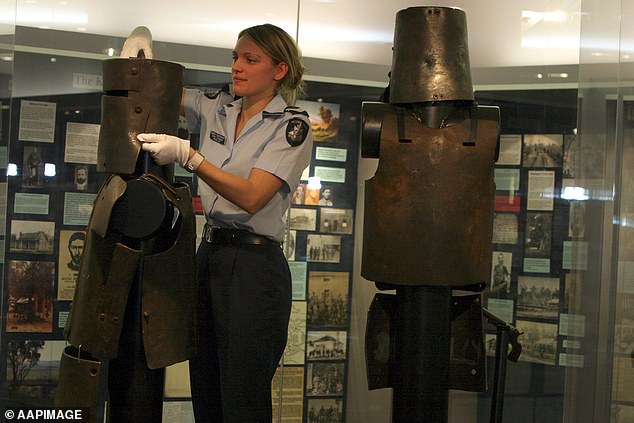
I guess it will never be known for sure whether that helmet belonged to Dan or Steve. I think people just assumed that one was Dan’s because it looks similar to Ned’s.
Speaking of Steve’s, I hear Steve Jager will finally reveal publicly where he thinks Ned Kelly’s skull is. He wants to reveal it in his ‘upcoming book’. But here’s a spoiler alert from Kelly Country insiders, get ready for it…… Jager thinks Kelly’s skull sits on his own shoulders! That’s right, he believes he’s the ‘reincarnation’ of Kelly! And will PROVE it in his book, whatever that means.
Note to Jager, stick to embarrassing yourself in replica armour and finger painting.
Not so cocky now, eh Ned?
Attachment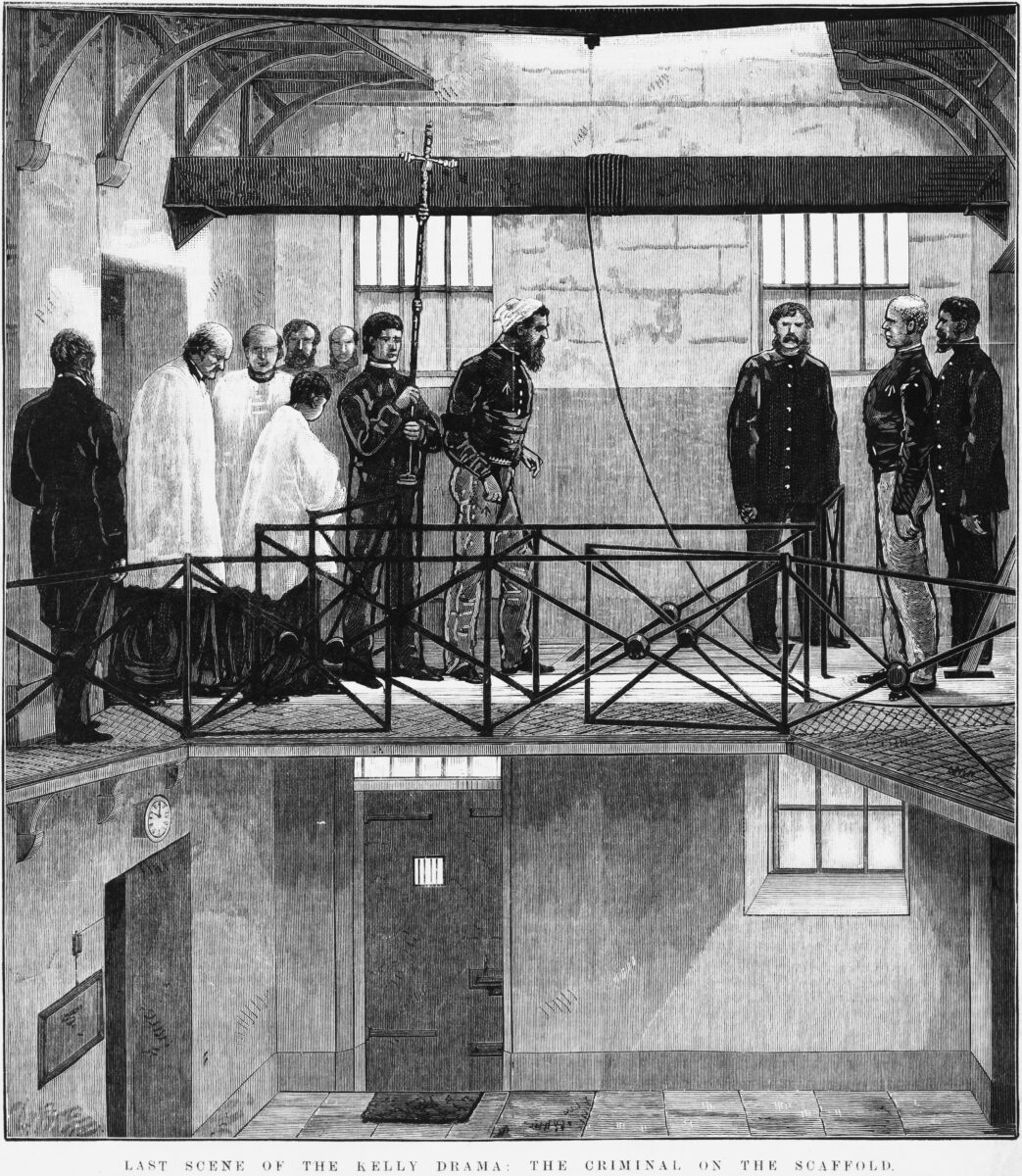
Not so handsome neither
Attachment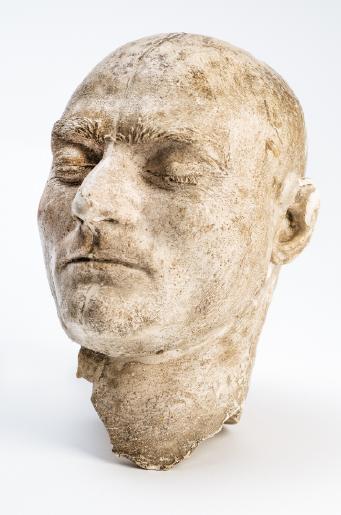
Breeding like rabbits
Attachment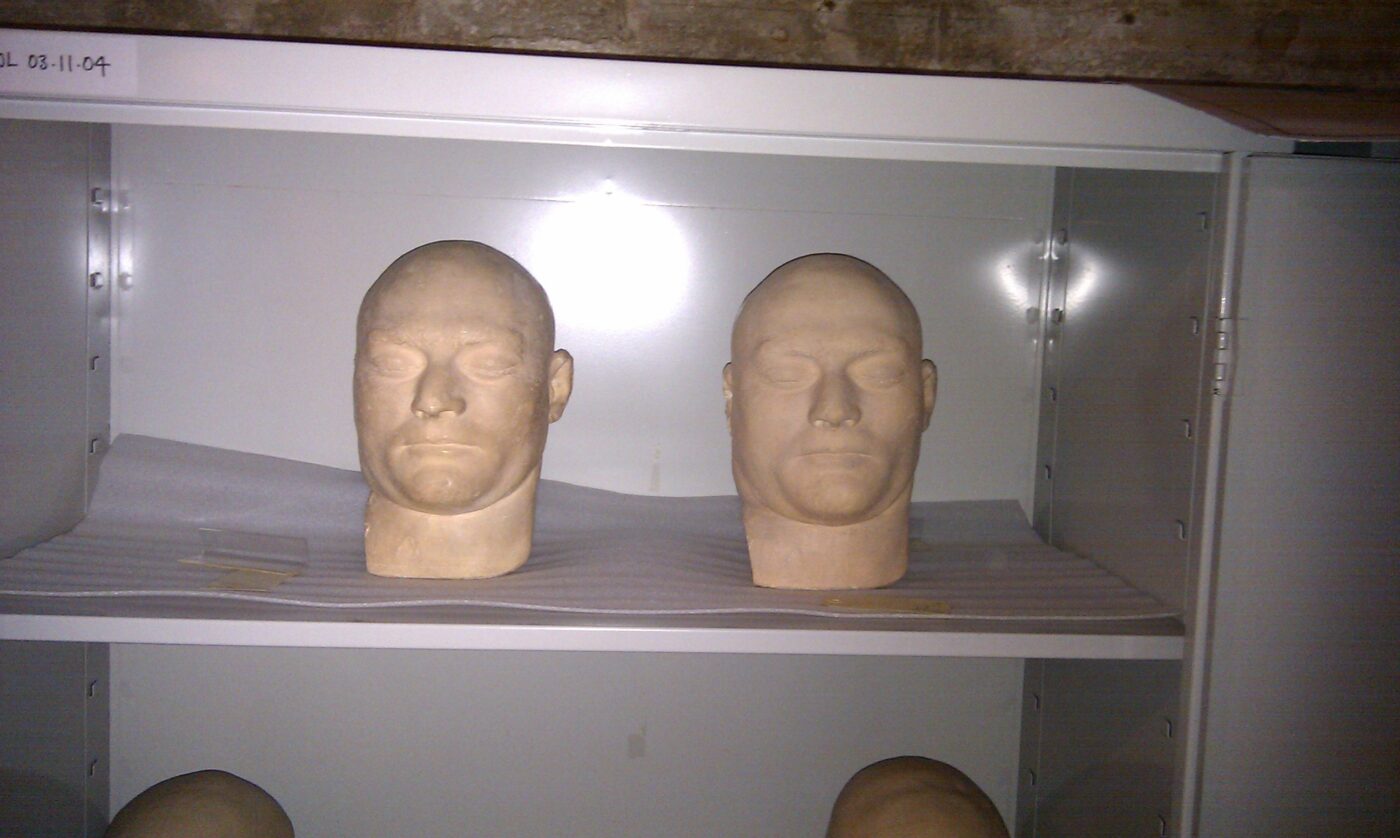
Here comes another one!
Attachment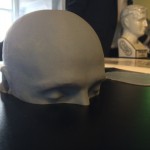
Kiss, sweetie?
Attachment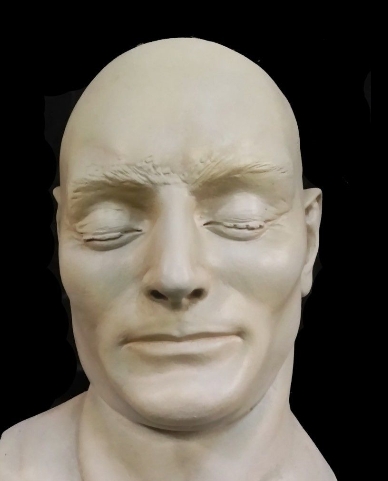
Scrubbed up well though
Attachment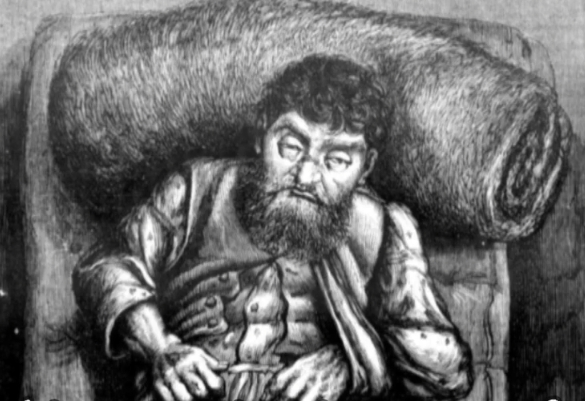
Stop making fun of him!
Attachment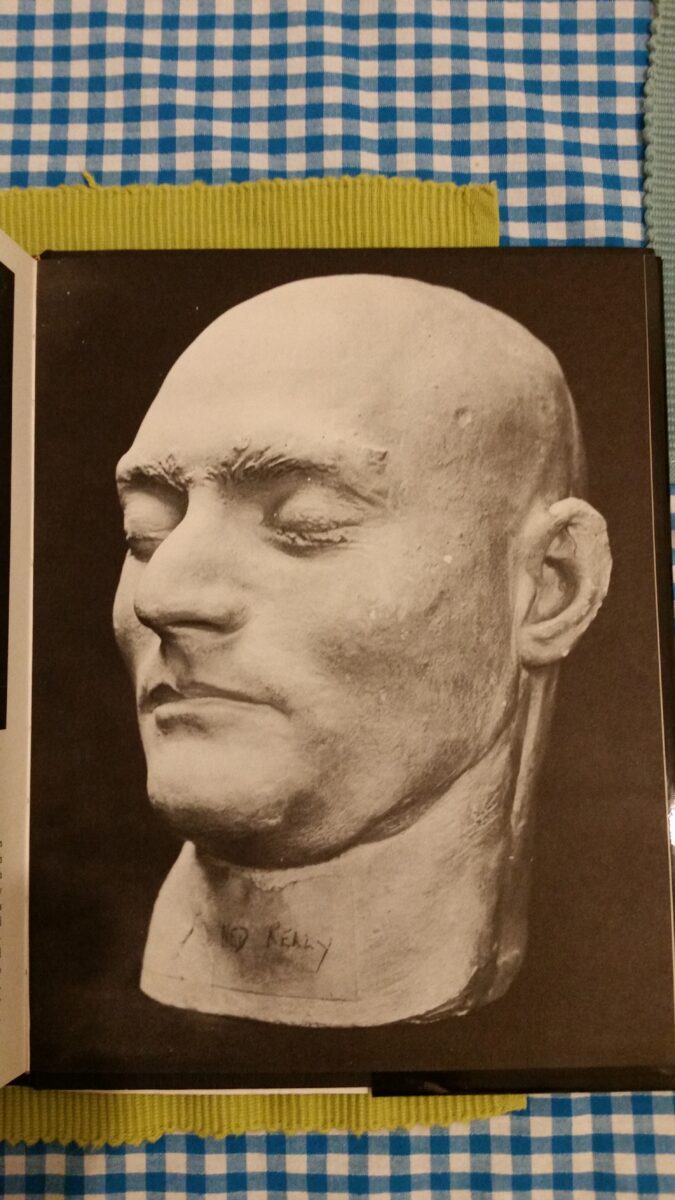
What a hooter!